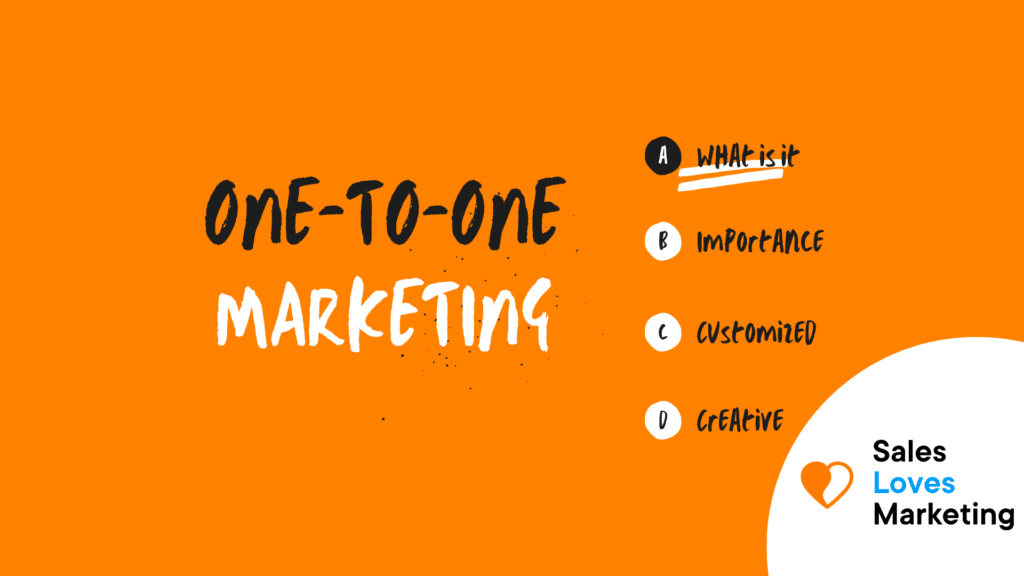What is One-to-One marketing?
One-to-One marketing is defined as a strategy in which a business focuses on getting to know personally the individual preferences and needs of a customer to fit them appropriately. This is common in industries where the customer tends to make large purchases that need to be discussed one-on-one with a seller.
What is One-to-One marketing used for?
The purpose of this strategy is to improve and make more efficient the relationship between the company and its customers, so it is not always necessary to apply it into a marketing plan, this will depend on the kind of industry the brand or business belongs to, some examples of the industries that One-to-One marketing may come useful are real estate, financial planning and even purchasing a vehicle; this is because in all three examples the purchase being made is rather large and will require the seller to have a close working relationship with the customer and establish trust before the customer is convinced to make a purchase from the brand.
How to start a One-to-One marketing strategy?
In today’s online market, it makes total sense that users that browse the web are not so willing to pay attention to new offers, this is probably because of the enormous amount of ads and promotions unrelated to the interests they receive every day without even asking but just by navigating through new sites. Therefore, implementing personalization in a marketing plan can be the huge difference between the user ignoring an ad and actually paying attention to it. The first steps for achieving this are:
Create a plan.
The first thing to do as a brand is defining the concept of the One-to-One marketing strategy that will be used to be able to understand how the company will manage this new approach. A way to do this is through asking and answering simple questions like what message the brand wants to give to the public, what is the time frame for the plan, what marketing resources are available, etc.
Collect data.
Once the brand has settled the basis of the plan, it is time to think about how it will be applied and presented to the public; for this, it is necessary to identify the data collection that will be used to inform the marketing program. There are different channels where this can be done through, such as social media, surveys, and questionnaires, feedback, etc.
Pros and cons of One-to-One marketing
Pros.
- Insight.
Because the One-to-One marketing strategy makes the brand have direct contact with the customers, the feedback and the information obtained from tracking the user’s behavior will help determine which techniques are working and which ones are not, so it is a lot easier for the business to make adjustments.
- Customer’s data.
Personalization means following possible customers’ preferences and movements; this provides brands great data about their public that mass marketing campaigns could not provide. With this information, businesses are capable of giving users better offers and services.
Cons.
- Time.
One-to-One marketing will not immediately be effective; it will take some time for it to give results before users start to rely on it.
- Changes.
Personal preferences and taste changes over time, so this means that One-to-One marketing will have to change as well to keep up with the new public and users.
